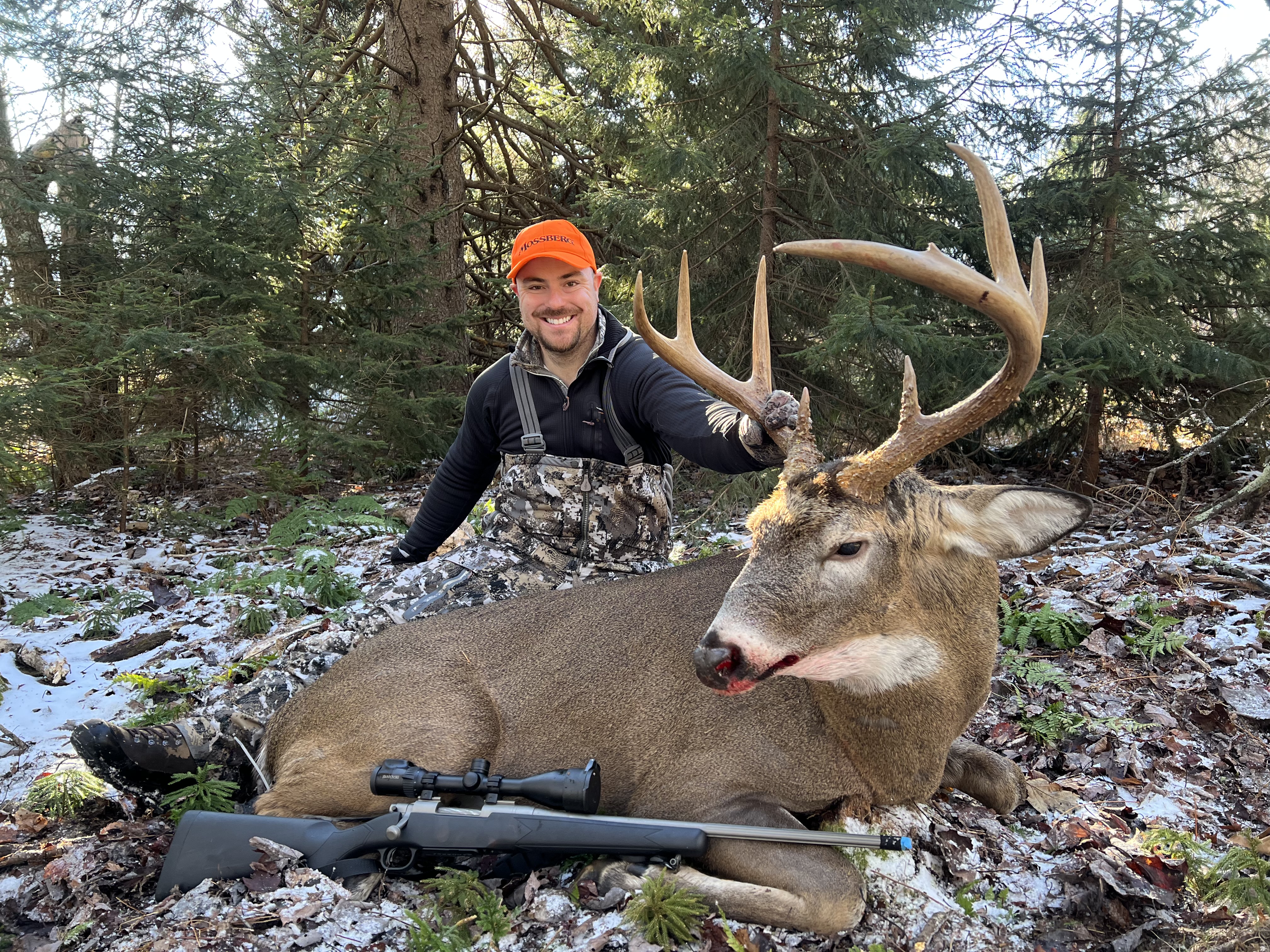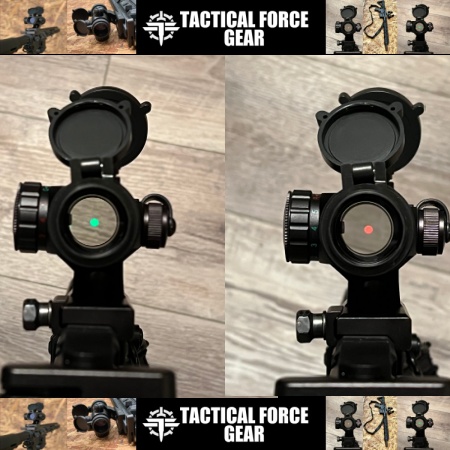Hunting whitetails in the northcountry forests of New England and the Upper Midwest is an undeniably challenging pursuit. Up there the landscapes are massive, think tens of thousands of acres of forest. Food sources and deer sign are more subtle. There are no edges of agricultural fields to target, and there might not even be stands of oaks dropping acorns. Lastly, deer densities are low, with some areas having maybe five deer per square mile.
It’s within this environment that Brett Joy, a member of the Just Hunt Club, has made a name for himself. Using a mix of old-school and modern hunting strategies, Joy has found success killing mature big woods bucks season after season.
I sat down with him for the most recent episode of the Outdoor Life podcast to learn his strategies for targeting mature bucks in the northwoods. Even if you don’t hunt big woods deer yourself, you can learn from Joy’s tactics and experience.
Find Edges and Transition Areas
Joy uses digital maps to identify areas where two or three types of habitat converge.
“Whitetails, whether they’re in a cornfield in Iowa or on a mountain in New Hampshire, are edge habitat creatures,” Joy says. “They live on the edges, but those edges can look a lot different depending on where you are in the whitetails’ range.”
In the big woods, look for edges between hardwoods and softwoods, swamps and mature timber, mature timber and early successional growth (recently logged areas). Once you’ve identified these spots, scout them in person. Ideally, you’ll be a mile or more away from any road.
Understand Big Woods Buck Behavior
Joy believes that because the habitat is so vast in the big woods, bucks tend to have larger home ranges and core areas. They also have a variety of bedding areas — even in the early season. Whereas in the agricultural country, mature bucks tend to have only a couple woodlots and thickets where they like to bed.
“Our deer could bed on any different point of a mountain in any cut, in a swamp on any given day,” Joy says. “[Those bedding areas] could be miles apart day to day. They’re almost more of a nomadic deer … but they do have areas that they come back to year after year.”
The key is that even if you’re in a buck’s core zone, you might not see him for a week or more.
Doe Groups Dictate Buck Behavior
Like everywhere else in whitetail country, during the rut big woods bucks will travel between doe groups searching for does in estrus.
“But here, you may have only three does that live within 500 acres,” Joy says. So bucks have to cover more ground and do more checking. And this need to travel long distances makes rutting bucks more vulnerable.
“I like to hunt them during the rut and really focus on those areas they frequent when they’re traveling from A to B, or I hunt near one of those doe groups … and if you can find a big primary scrape or pinch point within the core area of those does, you can catch bucks going through there semi-consistently.”
Trail cameras are a critical component of Joy’s strategy because there’s essentially no visibility in the areas that he hunts. In other words, there are not places to glass from in the big woods.
“If I cared less about what buck I was targeting, I could hunt sign and not use cameras and be successful, but I really do rely on them heavily for my strategy,” he says.
Joy positions most of his cameras on large community scrapes because they serve as social gathering spots that will attract deer in vast landscapes. On top of that, Joy focuses on secluded, high-elevation areas that bucks tend to prefer.
Joy aims to run cameras from about October 15 through December 15, which gives him the full range of rut activity.
Target Key Rut Dates
When you’re hunting the rut in the big woods, you need to have a good understanding of peak rut activity dates.
“What dictates everything is does coming into estrus,” Joy says. “And those bucks absolutely know those dates in this landscape and they will show up checking those doe groups on the same few days year after year.”
Joy conducted an in-depth trail camera survey using several years worth of his trail camera photos, plus his buddy’s photos to identify peak deer activity during the rut. He found that peak activity in his area was November 19th.
He then paired his trail cam data data with a biologist’s data on fawn conception dates in New Hampshire and he found that the peak conception date was November 19 as well.
“If I had to pick five or seven days, I’d put November 19th right in the middle of it,” Joy says.
Joy adds that he hasn’t witnessed a shutdown in activity due to lockdown. Bucks are covering the most ground during daylight during peak breeding dates.
But peak activity is different throughout whitetail country. You must examine your own trail camera photos and examine historical data to nail down the key dates where you hunt.
Read Next: North Woods Legend Hal Blood on Snow Tracking Bucks
Patience Kills Deer
Photo courtesy of Brett Joy
“Now to kill deer in these landscapes you can’t just expect to hunt one weekend,” Joy says. You need probably a week of hunting and you need to hunt for the entire week, dark to dark, he says.
Joy will set up different stands within an area for different wind directions, but once he picks an area he sticks with it and does not jump around from spot to spot — even if he’s not seeing deer right away.
“Sometimes I don’t make a decision about where I’m going to sit until the day before … I’ll wait until I have all the information on a particular spot, but once I decide to [hunt there], that’s it. There’s no deviating. Once you start to doubt and jump around, you’re done,” Joy says. “The day you’re not there is the day he’ll come by.”
If you have good trail camera data and historical data on a spot, it makes it easier to commit to it for a week of hunting. Other keys to staying in the hunt long-term are: efficient access to your stand, good clothing to keep you warm, quality food to eat throughout the week, plenty of rest at night, and staying hydrated. Most importantly, you’ve got to keep the faith.
“Sitting in the cold for 11 or 12 hours a day, day after day, it really does wear on you and you start to doubt yourself and doubt your spot. You start to become negative, and once that stuff compounds … you’re not going to be there when that buck comes by.”
If you are able to stay patient and stick it out, there’s a good chance that an old northwoods buck will eventually walk by. And no matter how big his rack is, he’ll be a true trophy whitetail.
Editor’s Note: This is the first of our six-part series on the “Masters of the Rut” in which we interview expert whitetail hunters from all around the country and share their tactics.
Read the full article here




